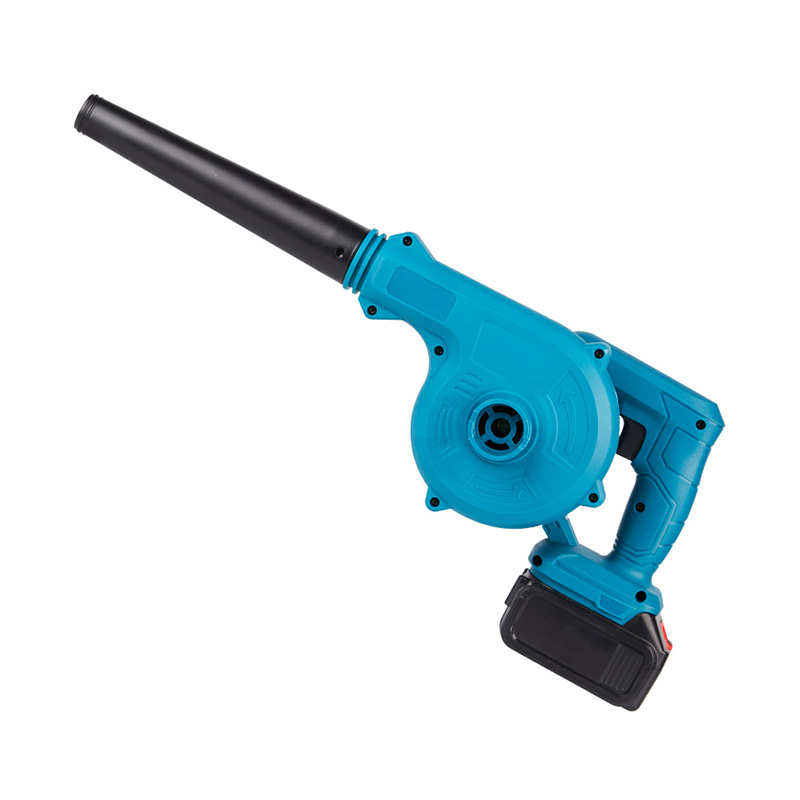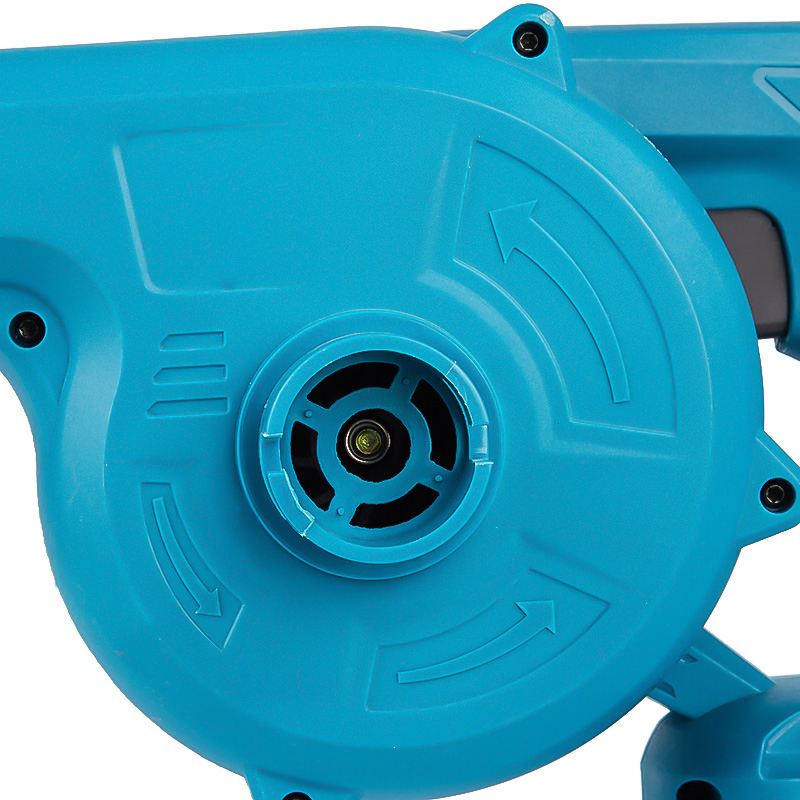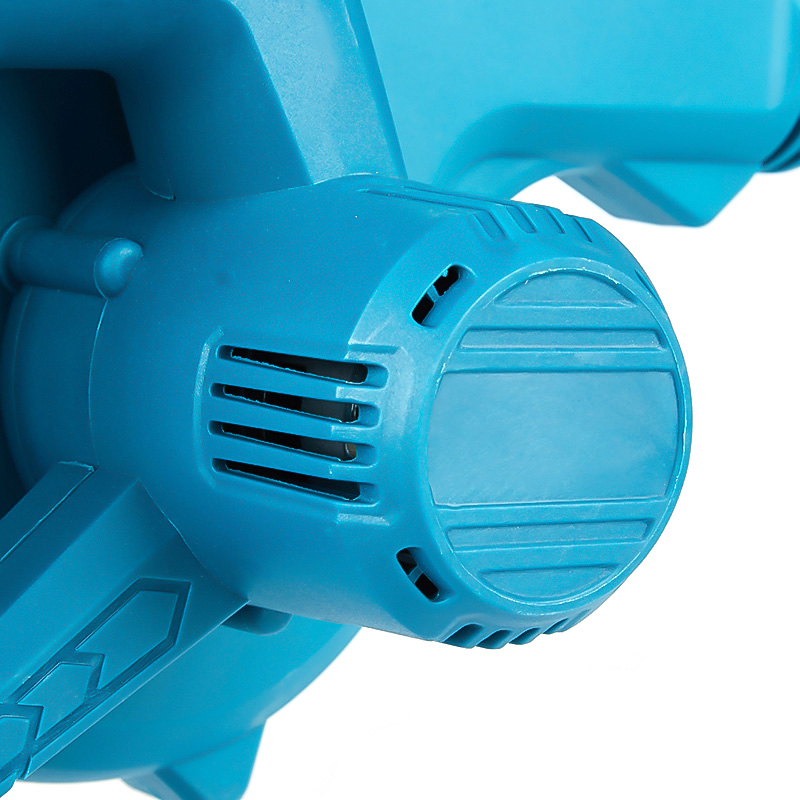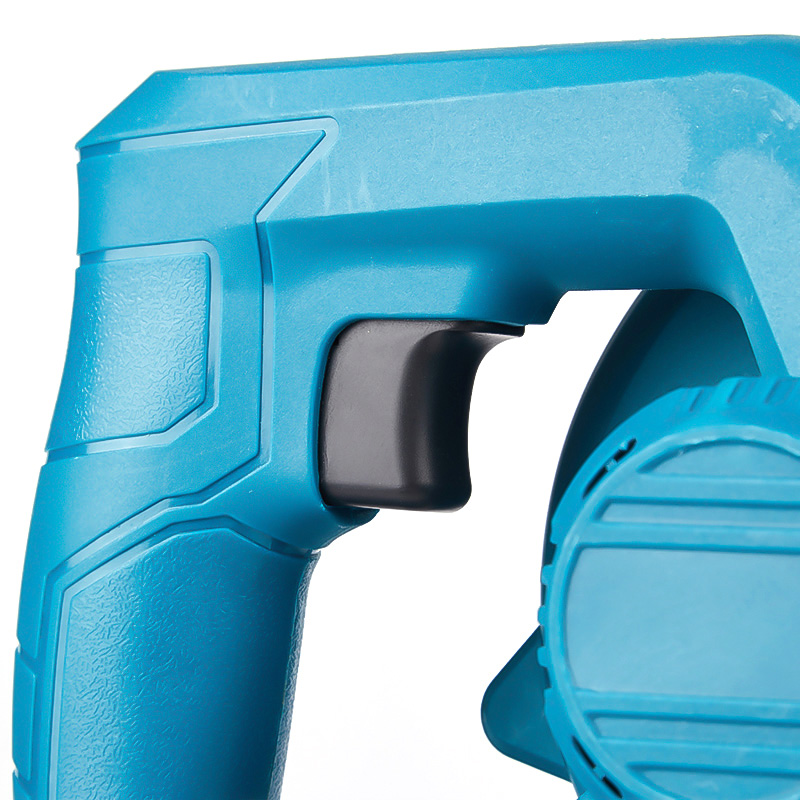The Lithium Cordless Hand Drill has become an essential tool for DIY enthusiasts, professionals, and hobbyists alike. Its versatility, portability, and battery ...
READ MORE







The blower adopts 18V rated voltage to ensure strong and stable power output. With an output current of 0~12A, it is sufficient to cope with various blowing needs. With an air speed of up to 48m/s and an air output of up to 22m³/min, this product also offers a choice of battery capacity of 1300mAh~6000mAh (customisable) to ensure a longer battery life. Whether for outdoor work or indoor use, it can meet the demand.
| Model No. | DW/MTLCFJ/001 |
| Rated voltage | 18V |
| Charger input voltage | 18V |
| Output current | 0~12A |
| Air velocity | 48m/s |
| Air output | 22m³/min |
| Battery capacity | 1300mAh~6000mAh (customisable) |
| Wind pressure | 5.5kpa |
| Motor no-load speed | 0~25000r/min |
The Lithium Cordless Hand Drill has become an essential tool for DIY enthusiasts, professionals, and hobbyists alike. Its versatility, portability, and battery ...
READ MOREA Lithium Cordless Hand Drill is a portable power tool powered by a lithium-ion battery, designed for drilling holes and driving screws without the need for a p...
READ MOREIn the world of power tools, understanding the distinction between a cordless hand drill and a cordless impact drill is essential for both DIY enthusiasts and p...
READ MORECordless Hand Drills have become essential tools for homeowners, DIY hobbyists, and professional contractors. While modern models are more reliable than ever, u...
READ MOREPortable lithium blower comprehensive guide: purchase, use and maintenance
Portable lithium blower has become an important tool for modern gardening and outdoor maintenance. With its cordless convenience, environmental protection and high efficiency, it is gradually replacing traditional gasoline-powered equipment. This guide will comprehensively analyze the technical characteristics, purchase points, usage tips and safety maintenance knowledge of lithium-powered leaf blowers to help you choose the most suitable product according to your needs and give full play to its performance advantages.
Portable lithium blower is an outdoor cleaning tool powered by lithium batteries, mainly used to blow away various debris such as fallen leaves, grass clippings, dust and snow. Compared with traditional gasoline-powered equipment, lithium-powered leaf blowers have significant advantages such as zero emissions, low noise and easy operation. The market share has grown rapidly in recent years. According to market feedback, this type of equipment is particularly suitable for use in noise-sensitive environments such as residential courtyards, community parks, and commercial places.
Currently, lithium-powered leaf blowers on the market are mainly divided into two categories: handheld and backpack. Handheld models usually weigh between 2.5-5 kg and are suitable for short-term operations and small areas, while backpack models have larger battery capacity and stronger power, suitable for long-term professional operations. The voltage range of mainstream products ranges from 18V to 40V, with 20V and 36V systems being the most common.
Advances in lithium battery technology are a key factor driving the development of this type of equipment. Modern lithium-ion batteries have the characteristics of high energy density, fast charging speed and no memory effect. Combined with efficient brushless motors, the performance of lithium-powered leaf blowers has reached the level of mid-range gasoline engines.
Tips and best practices
Correct use of portable lithium blowers can not only improve work efficiency, but also extend the life of the equipment and ensure safe operation. Mastering the operating posture is the basis for efficient operation. Keep your body balanced, stand firmly on both feet, hold the handle with one hand, and use the other hand to assist in supporting the body. When working, let the airflow point to the ground at about 45 degrees, using the ground reflection to enhance the cleaning effect. This technique is particularly suitable for cleaning adhered wet leaves or snow.
Operation strategy has a significant impact on work efficiency. For open areas, the "outside-to-in" cleaning method should be adopted, blowing the edge debris to the center first, and then cleaning it together. For corridors or walls, the airflow direction should be kept parallel to the obstacles. Adjusting the appropriate wind speed gear is also critical: low gear (about 13,000RPM) is suitable for dry fallen leaves and dust, while high gear (above 20,000RPM) is more effective for dealing with wet and heavy debris.
Battery management is the core knowledge of using lithium-ion leaf blowers. It is recommended to fully charge the battery before first use to activate the maximum capacity. In daily use, try to avoid full discharge, and replace the battery when the wind force is significantly weakened. In low temperature environments (below 0℃), battery performance will decrease. It is recommended to store the battery indoors and put it in your pocket to preheat before operation. Users with multiple batteries can adopt a "rotational use" strategy to avoid the same battery being in a high-load state for a long time. It is worth noting that lithium batteries should be kept at about 50% power when stored for a long time, rather than fully charged or fully discharged, which is especially important for gardening tools used seasonally.
For safe use, the following protective measures must be observed:
Wear goggles and dust masks, especially when cleaning dry areas
Make sure there are no small animals or children in the work area, as high-speed airflow may throw small stones and other debris
Avoid using in the rain or charging when the machine is wet to prevent the risk of short circuits
Pay attention to the temperature of the machine, and stop the machine to cool down after 20-30 minutes of continuous use to prevent overheating of the motor
Be particularly vigilant about lithium battery safety, and avoid punctures, impacts or contact with metal objects, which may cause internal short circuits
For models with vacuum function, the dust bag and filter should be cleaned after use to prevent the accumulation of decayed organic matter and produce odors. After use in winter, the water in the machine should be emptied to prevent ice from damaging the components.
Maintenance and troubleshooting
Regular maintenance is the key to ensure the long-term and stable operation of the portable lithium blower. Daily maintenance should start with a simple cleaning after each use. Wipe the body shell with a soft cloth, especially around the vents, to prevent dust accumulation and affect heat dissipation. For the air inlet and outlet, use a small brush or compressed air to clean to ensure smooth airflow. A small amount of silicone-based lubricant can be applied to metal parts such as nozzle connections to prevent rust and ensure smooth disassembly. Before long-term storage, it is recommended to thoroughly clean the entire machine and remove the battery for separate storage.
Professional maintenance of the lithium battery system is particularly important. Even if not in use, the battery should be charged and discharged once every 2-3 months to maintain battery activity. When charging, be sure to use the original charger and ensure that the ambient temperature is within the range of 0-40℃. If the battery is found to be swollen, leaking, or abnormally hot, stop using it immediately and contact a professional. When storing the battery, avoid extreme temperatures (below -10℃ or above 45℃) and high humidity environments, which will accelerate battery aging. A detail worth noting is that the lithium battery pack should not continue to be charged when the system warning appears, but should be handled according to the manual instructions.
Common troubleshooting includes:
Weakened wind: Check battery level, whether the air inlet is blocked or the filter needs to be cleaned
Abnormal noise: The fan blades may be damaged or the motor bearings may be worn, and the machine needs to be stopped for inspection
Unable to start: Confirm that the battery contacts are clean and try to reset the protection circuit (disconnect the battery for 30 seconds and then reconnect)
Overheat protection: Let the machine cool down, reduce continuous use time, and avoid operating in high temperature environments
Charging failure: Check the charger connection and confirm that the charging port is free of dust or damage
For electronic system failures, modern lithium-powered leaf blowers are usually equipped with multiple protection circuits, including overvoltage protection, undervoltage protection, overcurrent protection, and temperature protection. When these protection mechanisms are triggered, the machine may shut down automatically. At this time, you should refer to the manual to find out the reason instead of forcing a restart. For mechanical parts such as damaged fan blades, it is recommended to replace them with original parts. Non-original parts may affect dynamic balance and noise level.
Seasonal maintenance is essential to extend the life of the equipment. Before long-term storage in winter, make sure the machine is completely dry, the battery power is kept between 40-60%, and it is stored in a dry and cool place. When reactivating in the spring, it is recommended to perform a test run to check the status of each component. For professional users, a comprehensive overhaul can be performed once a year, including motor brush inspection (for brushed motors), bearing lubrication and circuit connection inspection. It is also a good habit to keep maintenance records. Recording the date of each maintenance and the parts replaced will help to detect potential problems in a timely manner.
Safety precautions and lithium battery risk prevention and control
The safe use of portable lithium blower is inseparable from a deep understanding of the characteristics of lithium batteries and related risk prevention and control measures. Although lithium batteries are efficient and convenient, they are at risk of thermal runaway, a chemical reaction chain that may cause smoke, fire or even explosion. The most dangerous scenario in use is physical damage to the battery, such as falling, puncture or squeezing, which may cause internal short circuits. Therefore, operators should always avoid throwing, stepping on or touching the battery with sharp objects. When the battery shell is found to be deformed, leaking or emitting an abnormal odor, it should be stopped immediately and placed in a non-flammable open space away from people and buildings.
Charging safety is another link that needs to be strictly controlled. Charging of lithium-ion leaf blowers should be done on a well-ventilated, non-flammable surface away from direct sunlight and heat sources. Charger selection is critical and must be done with the original charger specified by the manufacturer, as there may be subtle but critical differences in the charging voltage and current curves of different models. The device should not be covered during charging and it is recommended that someone is watching, especially when charging a new battery for the first time or charging a battery that has not been used for a long time. It should be disconnected promptly after full charge to avoid long-term maintenance of the "overcharged" state, which will accelerate the chemical aging of the battery.
Environmental factors have a significant impact on the safety of lithium batteries. Lithium-ion leaf blowers should not be used or charged in extreme temperatures, and the operating environment temperature should be maintained between -10℃ and +40℃. In cold environments, the battery capacity will temporarily decrease, which is normal, but do not try to force a fast charge. High temperature environments (such as the trunk of a car in summer) will accelerate battery degradation and increase risks, so the device should be stored in a cool and dry place. When the machine is moved from a cold environment to a warm place, condensation may occur, and it should be allowed to dry completely before use or charging.
Special protection measures for lithium batteries include:
During transportation and storage, the battery electrodes should be insulated to prevent short circuits caused by contact with metal objects
It is prohibited to modify the battery or use non-designated chargers, which will bypass the protection circuit and cause danger
Avoid immersing the battery in any liquid, including water, oil or other solvents
Professional users should regularly check the battery management system (BMS) function to ensure that overcharge/over-discharge protection is normal
Waste lithium batteries should be sent to designated recycling points and should not be mixed with ordinary garbage
For commercial users or large-scale deployments, it is recommended to formulate lithium battery management specifications, including usage registration, regular health checks and service life control (usually 3-5 years). At the same time, appropriate fire protection equipment should be equipped, such as fire blankets or Class D fire extinguishers, specifically for metal fires. It is worth noting that the pack manufacturers of lithium-powered leaf blowers usually waive liability for changes or omissions in the protection circuit function, so users should not modify the battery management system on their own. By following these safety guidelines, the convenience of lithium-powered leaf blowers can be maximized while minimizing risks.